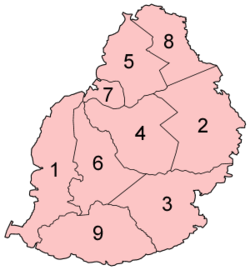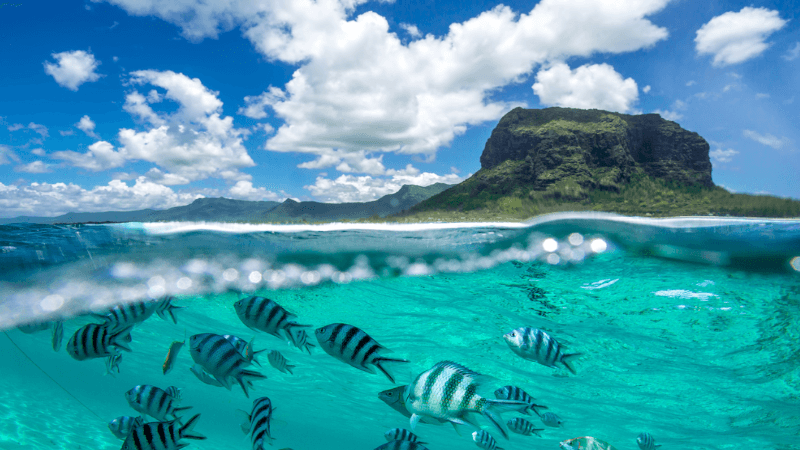Mauritius Island
Mauritius Island
ABOUT
Mauritius is a densely populated island of around 1.2 million people. It has a reputation for stability and racial harmony among its mixed population. Mauritius is known as a plural society where all the ethnic groups present: Hindus, Muslims, Creoles, Chinese and Europeans live in peace and where all the ancestral cultures have been preserved. These features make the island a unique place in the world, and the Mauritians known for their tolerance and kindness towards all people.
Most Mauritians are bilingual being equally fluent in French and English. English is the official language, but French and Creole are widely spoken. Oriental languages also form part of the linguistic mosaic.
Mauritius has preserved its image as one of Africa's few social and economic success stories, being a sugar and clothing exporter and a center for up market tourism.
The island of Mauritius itself is divided into nine districts:
- Black River
- Flacq
- Grand Port
- Moka
- Pamplemousses
- Plaines Wilhems
- Port Louis (Capital of Mauritius)
- Rivière du Rempart
- Savanne
Mauritius History
The French assumed control in 1715, developing the island into an important naval base overseeing the Indian Ocean trade, and establishing a plantation economy of sugar cane.
The British captured the island in 1810, during the Napoleonic Wars through the Treaty of Paris. Mauritius remained a strategically important British naval base, and later on, an air station playing an important role during World War II for anti-submarine and convoy operations, as well as the collection of signals intelligence. On 12 March 1968, Mauritius became Independent.
What is Mauritius famous for?
Mauritius is famous for the Dodo (an extinct flightless bird the size of a swan), a multicultural population, incredible expensive resorts (up to $600 a night and more) the island caters for the more wealthy customers, Mauritius rum, sugar and fruit jams, the Seven Coloured Earths, an underwater waterfall, the Giant water lilies in the Pamplemousses Botanical Garden, ravanne drum and Sega music, and nice golf courses.
Extinct Dodo Legacy: Mauritius is famous for being the home of the extinct flightless bird, the dodo, which has become a symbol of the island's biodiversity.
Cultural Melting Pot: Mauritius boasts a rich multicultural heritage, blending Indian, African, Chinese, and European influences into a vibrant tapestry of traditions, languages, and cuisines.
Mesmerizing Underwater Illusion: Off the coast of Mauritius, an optical illusion known as the "underwater waterfall" captivates visitors with its breathtaking appearance created by sand and sediment deposits.
Priceless Stamps: The Blue Penny Museum in Port Louis showcases two of the rarest and most valuable stamps in the world, the "Blue Penny" and the "Red Penny," providing a glimpse into Mauritius' philatelic history.
Kaleidoscope of Colors: Mauritius dazzles with its vibrant landscapes, from the enchanting Seven Colored Earths at Chamarel Plain to the vivid coral reefs surrounding the island.
UNESCO Heritage: Aapravasi Ghat, a former immigration depot, and the Le Morne Cultural Landscape are two UNESCO World Heritage Sites that reflect Mauritius' historical and cultural significance.
Rum Paradise: Mauritius is renowned for its rum production, offering rum enthusiasts a chance to indulge in tastings and immerse themselves in the island's rum-making traditions.
Thriving Biodiversity: Despite its small size, Mauritius boasts an impressive array of unique plant and animal species, thanks to dedicated conservation efforts.
Delectable Street Food: Mauritius tantalizes taste buds with its iconic street food, including the beloved dholl puri, a lentil-filled flatbread, and the spicy and tangy seafood vindaye.
Majestic Waterfalls: Explore the breathtaking waterfalls of Mauritius, such as Tamarin Falls, Alexandra Falls, and Chamarel Waterfall, as they cascade down lush green landscapes.
.jpg)

.jpg)

Comments
Post a Comment